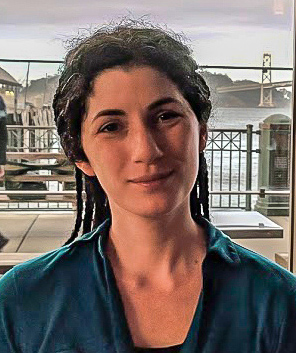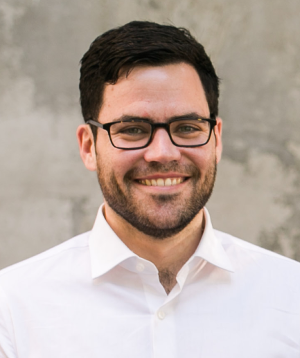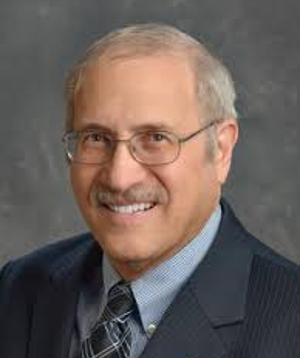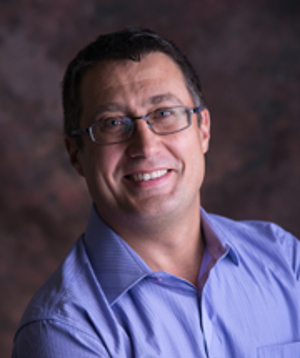NIMBioS Calendars: Events Seminars Webinars Live Streaming Visitors Working Groups Workshops Tutorials Other
NIMBioS Webinar Series
NIMBioS is hosting a series of webinars focusing on topics at the interface of mathematics and biology. Unable to attend the live presentation? That's ok! Register to attend, and you will receive a link to the webinar recording.
Watch recorded webinars online:
- The role of applied math in real-time pandemic response: How basic disease models work with Dr. Nina Fefferman
- Costs and benefits of defending against viral infection: Lessons from natural ecosystems with Dr. David Talmy
- Modeling for a globally connected world: What models are good for and how they work with Dr. Louis Gross
- Mathematical modeling of malaria transmission by mosquitoes with Dr. Vitaly Ganusov
NIMBioS hosts a Q&A via Zoom for these webinars. Viewers are able to submit questions throughout the talk, which are answered at the end of the talk. Text summaries of questions and answers are posted below with each webinar.
Past Webinars

The role of applied math in real-time pandemic response: How basic disease models work
Date: 3:30 p.m. EDT Tuesday, March 31, 2020
Speaker: Dr. Nina Fefferman, Professor, Mathematics and Ecology & Evolutionary Biology, University of Tennessee, Knoxville
Moderator: Dr. Louis Gross, NIMBioS Director and Chancellor's Professor of Ecology and Evolutionary Biology and Mathematics at the University of Tennessee
Abstract: It's not normally instantly obvious what mathematicians do. It's also not normal to be able to use middle-school math to help try to save the world. Right now, things are not normal. Join us for "The role of applied math in real-time pandemic response: How basic disease models work" for a presentation about how very simple, middle-school math (and much fancier versions of the same thing) can help us fight COVID-19.
Dr. Nina Fefferman is a mathematical biologist with a long history of work on biosecurity and pandemic preparedness and response. She has consulted in this area for state and federal agencies and departments on threats including TB, Ebola, Zika virus, H1N1 2009, and many others, now including COVID-19. She is a professor in the Departments of Mathematics and Ecology & Evolutionary Biology at the University of Tennessee, Knoxville. Dr. Fefferman directs the Mathematical Modeling Center at the National Institute for Mathematical and Biological Synthesis.
Webinar slides (pdf)Some Questions Posed by Webinar Participants (pdf)
Some Basic Texts on Infectious Disease Modeling (pdf)

Costs and benefits of defending against viral infection: Lessons from natural ecosystems
Date: 3:30 p.m. EDT Tuesday, April 7, 2020
Speaker: Dr. David Talmy, Asst. Professor, Microbiology, University of Tennessee, Knoxville
Moderator: Dr. Louis Gross, NIMBioS Director and Chancellor's Professor of Ecology and Evolutionary Biology and Mathematics at the University of Tennessee
Abstract: The COVID-19 virus is shaping Earth in unprecedented ways, for example by changing the rate at which humans release greenhouse gasses into the atmosphere. Yet, through their activity in natural ecosystems, viruses have been shaping Earth as a system for millions of years. In this presentation, I will consider diverse ways viruses may have shaped Earth as a system, and discuss the value of mathematical models for understanding factors which govern the dynamics of viral infections globally.
David Talmy grew up in London, England. He was trained in mathematics as an undergraduate at the University of Sussex. Dr. Talmy is an assistant professor in the Department of Microbiology at the University of Tennessee, Knoxville. He is also an affiliate faculty member at the National Institute for Mathematical and Biological Synthesis. As a graduate, he transitioned into environmental research through a master's program at the University of York specifically tailored to train mathematicians in ecological research. His doctoral training was primarily at Plymouth Marine Laboratory in the UK, which houses one of the foremost European marine ecosystem modeling groups. His doctoral degree was awarded by the University of Essex, and his doctoral research focused on modeling light and nutrient acclimation of marine phytoplankton. He spent his postdoctoral years at the Massachusetts Institute of Technology developing models to explain how the elemental composition of organic material is set by the coupling of autotrophs and heterotrophs in the surface ocean. Talmy leads a research group at the University of Tennessee which explores how cellular trade-offs between resource acquisition and defense against environmental stress and predation shape microbial ecosystems. Their research is highly collaborative, forging connections between quantitative modeling, field, and laboratory experimentation. A hallmark of their approach is direct and iterative testing of mechanistic models with laboratory and in situ measurements.
Webinar slides (pdf)Some Questions Posed by Webinar Participants (pdf)

Modeling for a globally connected world: What models are good for and how they work
Date: 3:30 p.m. EDT Tuesday, April 14, 2020
Speaker: Dr. Louis Gross, NIMBioS Director and Chancellor's Professor of Ecology and Evolutionary Biology and Mathematics at the University of Tennessee
Moderator: Dr. Suzanne Lenhart, NIMBioS Associate Director and Chancellor's Professor of Mathematics at the University of Tennessee
Abstract: Policies for the COVID-19 pandemic response have relied upon models of various types to project future trends and assess the potential impacts of alternative amelioration strategies. I invite you to join us for basic overviews of the process of modeling, the “art” of model construction, and the array of different kinds of approaches (mathematical, computational, and graphical) that are applied in the life sciences. The presentation is designed for a general audience without modeling background.
Dr. Louis Gross is an applied mathematician whose research over forty years has focused on modeling and computational methods in many areas of ecology, including disease ecology, landscape ecology, spatial control for natural resource management, photosynthetic dynamics, climate change and the development of quantitative curricula for life science undergraduates. In addition to directing NIMBioS, he directs The UTK Institute for Environmental Modeling, which provides advice on chemical and radiological risk assessment.
Webinar slides (pdf)

Mathematical modeling of malaria transmission by mosquitoes
Date: 3:30 p.m. EDT Tuesday, April 21, 2020
Speaker: Dr. Vitaly Ganusov, Assoc. Professor, Microbiology, University of Tennessee, Knoxville
Moderator: Dr. Louis Gross, NIMBioS Director and Chancellor's Professor of Ecology and Evolutionary Biology and Mathematics at the University of Tennessee
Abstract: Malaria is a disease caused by parasites from the genus Plasmodium. Every year, 200 million individuals experience malaria, and approximately 500,000 of these individuals die. It is well established that malaria is transmitted from person to person by mosquitoes. Yet, quantitative details of how likely a bite by an infected mosquito results in infection remains poorly understood. In my talk I will analyze experimental data in which mosquitoes, carrying Plasmodium yoelii sporozoites, bite individual mice, and mathematically model the likelihood of infection as a function of several parameters (number of sporozoites per mosquito, feeding time, blood take probability) that were recorded in the data. Our results suggest that infection probability depends strongly on the number of sporozoites mosquitoes carry, and less on the probing time, and is independent of whether a mosquito takes the blood meal or not. I will also discuss implications of these results for modeling epidemiological dynamics of malaria and for clinical trials of malaria vaccines.
Dr. Vitaly Ganusov. The core of Dr. Ganusov's research is to gain deeper understanding of biological processes by using mathematical modeling. His lab combines the use of quantitative data (coming from different types of experiments in immunology and infectious diseases) and models. The emphasis of their work is on understanding which models are and which are not able to describe the data. Currently, the focus is on understanding 1) how vaccine-induced T cells locate and eliminate malaria parasites in the liver, 2) how lymphocytes recirculate in the body, 3) basic details of tuberculosis pathogenesis, 4) early HIV dynamics in humans, and 5) how to prevent evolution of bad (high false discovery rate) science.
Introductory slides (pdf)Webinar slides (pdf)
Some Questions Posed by Webinar Participants (pdf)
Additional material:
-
Sinnis Laboratory web site at Johns Hopkins Malaria Research Institute with two videos by Christine Hopp:
(a) Time lapse video: Mosquito inoculation of Plasmodium yoelli sporozoites into a mouse.
(b) Plasmodium berghei sporozoites moving in the dermis after their inoculation into a mouse. - Reference with videos: Vanderberg JP, Frevert U. 2004. Intravital microscopy demonstrating antibody-mediated immobilisation of Plasmodium berghei sporozoites injected into skin by mosquitoes. International journal for parasitology 34(9): 991-996. [Link]
For questions, please contact NIMBioS Deputy Director Chris Welsh at cwelsh@nimbios.org.
NIMBioS
1122 Volunteer Blvd., Suite 106
University of Tennessee
Knoxville,
TN 37996-3410
PH: (865) 974-9334
FAX: (865) 974-9461
Contact NIMBioS


